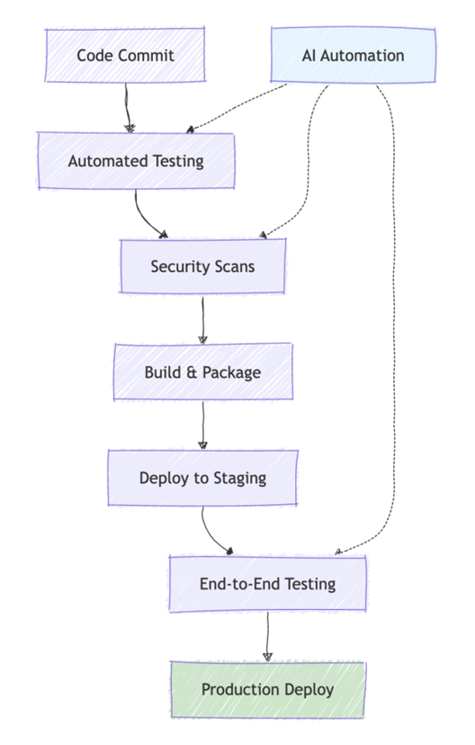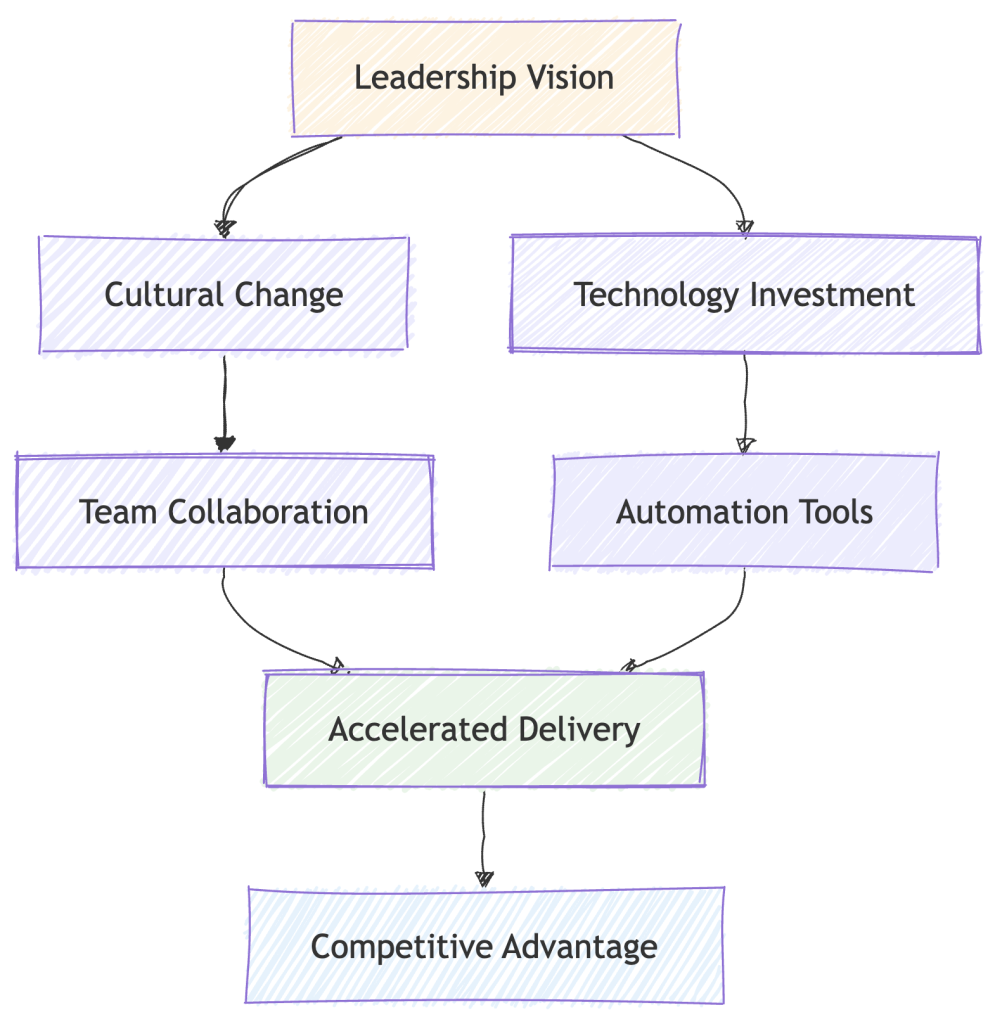Introduction
Recently we realizedIn today’s competitive digital economy, the organizations that embrace DevOps automation early are moving at a fundamentally different pace than those that do not. One of our clients, for instance, successfully rolled out their fourth feature update in a single week, while their closest competitor remains tied to a quarterly release cycle that continues to face delays. This contrast underscores a larger truth: automation in DevOps has become the defining factor in achieving accelerated software delivery and market leadership.
The data confirms this trend. The global DevOps market is projected to surpass $25.5 billion by 2028, reflecting the growing adoption of automation in software engineering. Already, more than 83% of developers use DevOps practices in some form. What was once considered an emerging trend has now become a business imperative for modern software delivery.
Why Traditional Development Teams Struggle with Speed and Agility
Traditional software development often resembles moving at a slow pace on a fast highway. Developers finish new features, but delays in QA environments, operational reviews, and multiple handoffs slow down delivery. These problems lead to long release cycles that make organizations vulnerable to quicker competitors.
By bridging the gaps between the development, operations, and security teams, DevOps addresses these problems. Businesses can move from releasing updates every few months to deploying them in a matter of hours by integrating automation throughout the process, all while preserving improved quality and resilience.
Redefining DevOps Automation in Software Delivery
Many assume automation means replacing jobs, but in reality, DevOps automation enhances human expertise. It acts as a reliable system that never misses tasks, doesn’t suffer from fatigue, and continuously improves processes.
The numbers tell the story. DevOps automation tools market size grew from $9.74 billion in 2023 to $12.11 billion in 2024 – a 24.4% growth rate. That’s companies scrambling to catch up. Organizations are rapidly adopting automation to accelerate delivery pipelines, improve quality, and reduce manual dependencies.
AI-assisted DevOps automation is becoming more common with predictive monitoring, real-time anomaly detection, and automated bug detection. These technologies do not remove human judgement; they support it - teams can identify problems sooner and make informed decisions.

CICD – Continuous Integration & Continuous Delivery/Deployment
CI/CD: The Cornerstone of Modern Software Delivery
The way businesses release software has changed as a result of continuous integration and continuous delivery/deployment, or CI/CD. The days of demanding weekend deployments that involved high risk and prolonged downtime are long gone.
Organizations can confidently and regularly deploy updates with CI/CD pipelines. Automated testing cycles guarantee speed and dependability by finishing in a matter of minutes. Actually, businesses that use too many CI/CD tool frequently see a decline in performance, which emphasizes the necessity of a simplified DevOps toolchain approach.
Integrating Security Through DevSecOps
Historically, security teams resisted automation, fearing that automated scans might overlook risks. In practice, the opposite has proven true. Automated DevSecOps pipelines identify vulnerabilities far faster and with higher accuracy than manual reviews.
In one of our client implementations, automated scans flagged potential vulnerabilities within minutes of code being committed. Issues were immediately assigned back to developers, who could fix them while the context was still fresh - saving both time and cost.
Cloud and DevOps: Driving Scalable, Cost-Efficient Delivery
Cloud platforms have become a natural partner for DevOps automation. By leveraging cloud services and DevOps as a service, organizations accelerate adoption and scale without being constrained by legacy infrastructure.
[You may like reading: 5 Benefits of Using DevOps with Cloud]
Cloud strategy consulting plays a critical role in aligning technical implementation with organizational needs. One client reduced infrastructure costs by 38% through automated scaling policies, while Generative AI-driven cloud optimization. Generative AI services analyze usage patterns and suggest improvements that humans just don’t think of.
Leadership and Culture: The Foundation of DevOps Success
Though automation and tools are valuable, the ultimate strength of DevOps lies in altering the culture. It needs to be fostered by leadership through encouraging collaboration between development, operations, and security.
Small wins, like marking the first automated deployment or cutting deployment time in half, make teams embrace change. With time, such a shift in attitude transforms DevOps into a process and then into a competitive advantage. Companies with change leadership as a focus always enjoy superior adoption of DevOps automation, CI/CD pipelines, and cloud-native approaches. Absent this cultural consensus, even top-of-the-line tools cannot deliver their full benefit.

Leadership, Cultural Change to Competitive Advantage
Measuring Success in DevOps Automation
The success of DevOps automation can be tracked through four key performance indicators (KPIs):
- Lead time for changes
- Deployment frequency
- Mean time to recovery (MTTR)
- Change failure rate
Clients adopting this measurement-driven approach often see immediate improvements. One enterprise now deploys to production six times daily with increased system reliability, proving that smaller, automated releases enhance both stability and speed.
[ You may like reading: 5 Benefits of Using Strategic Approach to Automation in DevOps: Knowing When and What to Automate]
What’s Next: The Future of DevOps Automation
The DevOps ecosystem is changing, especially with the rise of serverless computing, edge architectures, and AI-driven development. Those organizations investing now in digital engineering services and cloud migration services are laying the groundwork for greater agility in the long-term.
The principles remain the same, automation, reliability, and speed, but the tools will continue to evolve. Organizations that think ahead, should put flexible architectures as a priority to remain competitive.
Conclusion
DevOps automation is no longer optional. It is a strategic necessity for companies that want to speed up software delivery. By breaking down silos, using automation, and adopting cloud-native practices, businesses change from slow-moving organizations into market leaders.
The message is clear: speed wins. Companies that embrace DevOps automation respond faster to market changes and also shape them. They become innovation leaders in their industries.




